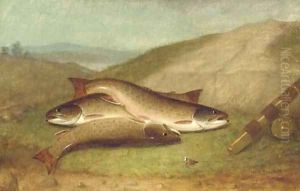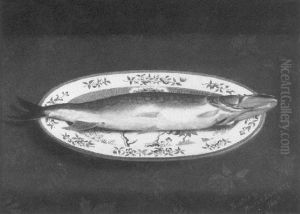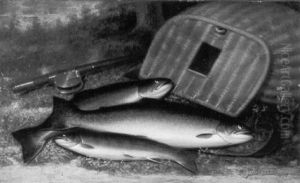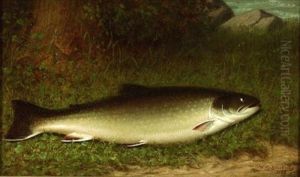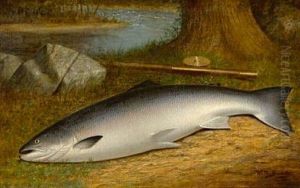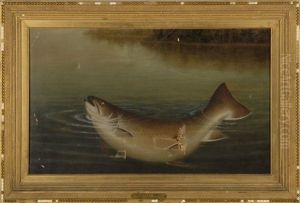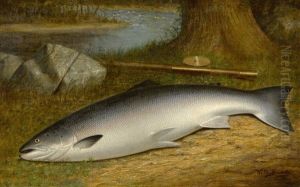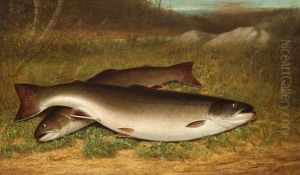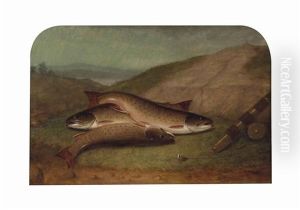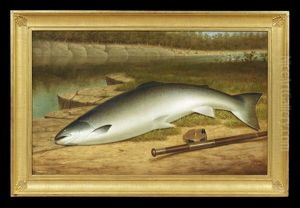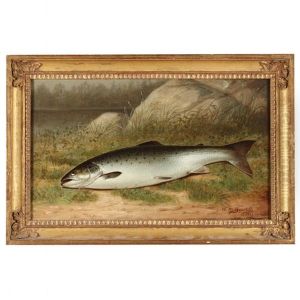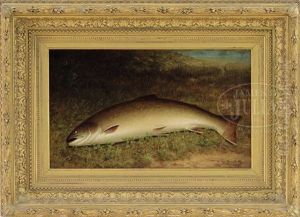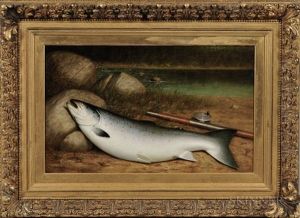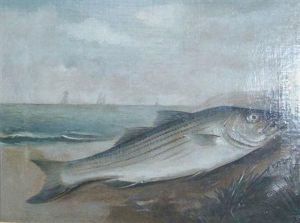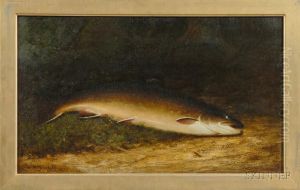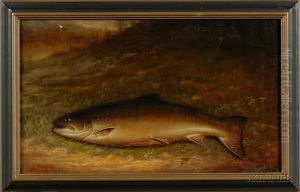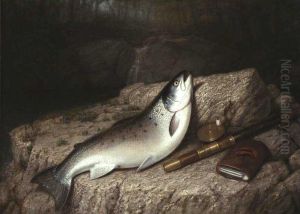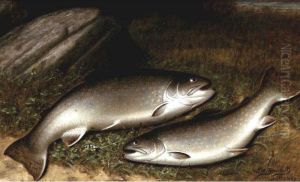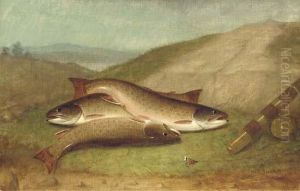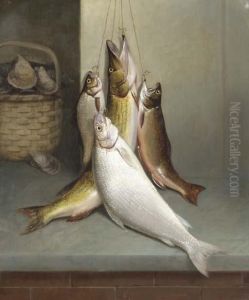Walter M. Brackett Paintings
Walter M. Brackett was an American artist born on June 15, 1823, in Unity, New Hampshire. He was known primarily for his detailed and realistic paintings of fish, still lifes, and landscapes, capturing the essence of the American wilderness and its natural beauty during the 19th century. Brackett's work is characterized by its meticulous attention to detail, vibrant colors, and the ability to convey the textures and subtleties of his subjects, making his paintings highly valued among collectors of American art.
In the early stages of his career, Brackett began as a self-taught artist, drawing inspiration from the natural world around him. His passion for nature and wildlife, particularly fish, led him to specialize in this niche, setting him apart from his contemporaries. He had a keen eye for capturing the intricate patterns and colors of fish, earning him a reputation as a master of fish portraiture.
Aside from his fish paintings, Brackett also explored landscape painting, contributing to the larger movement of American landscape art in the 19th century. His landscapes often depicted serene and untouched areas of the American countryside, reflecting a sense of tranquility and the untouched beauty of nature before industrialization.
Brackett's work received recognition during his lifetime, and he was a member of various art associations. Despite the recognition, he remained focused on his craft rather than seeking fame, dedicating his life to exploring and capturing the natural world on canvas.
His legacy is preserved through his artworks, which continue to be appreciated for their technical skill and beauty. Walter M. Brackett passed away on March 31, 1919, leaving behind a body of work that continues to inspire and captivate art lovers and collectors. His contributions to American art, especially in the realm of fish paintings and landscapes, remain significant, highlighting his ability to capture the essence of 19th-century American wilderness with a remarkable sense of realism and detail.
